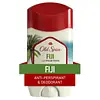What's inside
What's inside
 Key Ingredients
Key Ingredients

 Benefits
Benefits

 Concerns
Concerns

 Ingredients Side-by-side
Ingredients Side-by-side

Water
Skin ConditioningCocamidopropyl Betaine
CleansingSodium Methyl Cocoyl Taurate
CleansingParfum
MaskingSodium Lauroyl Methyl Isethionate
CleansingSodium Lauroyl Isethionate
CleansingOleth-10
EmulsifyingAloe Barbadensis Leaf Juice
Skin ConditioningGlycerin
HumectantPEG-120 Methyl Glucose Trioleate
CleansingPhenoxyethanol
PreservativeHydroxyacetophenone
AntioxidantPanthenol
Skin ConditioningPEG-33
HumectantTetrasodium EDTA
PEG-8 Dimethicone
EmulsifyingPropanediol
SolventPolysorbate 20
EmulsifyingPEG-14
HumectantLimonene
PerfumingCaprylyl Glycol
EmollientDecylene Glycol
Skin ConditioningCI 60730
Cosmetic ColorantBHT
AntioxidantCitric Acid
BufferingPPG-12-Buteth-16
Skin ConditioningPEG-150 Pentaerythrityl Tetrastearate
EmulsifyingSodium Hydroxide
BufferingPPG-26-Buteth-26
Skin ConditioningPEG-6 Caprylic/Capric Glycerides
EmulsifyingPEG-40 Hydrogenated Castor Oil
EmulsifyingEthylhexyl Methoxycinnamate
UV AbsorberButyl Methoxydibenzoylmethane
UV AbsorberEthylhexyl Salicylate
UV AbsorberWater, Cocamidopropyl Betaine, Sodium Methyl Cocoyl Taurate, Parfum, Sodium Lauroyl Methyl Isethionate, Sodium Lauroyl Isethionate, Oleth-10, Aloe Barbadensis Leaf Juice, Glycerin, PEG-120 Methyl Glucose Trioleate, Phenoxyethanol, Hydroxyacetophenone, Panthenol, PEG-33, Tetrasodium EDTA, PEG-8 Dimethicone, Propanediol, Polysorbate 20, PEG-14, Limonene, Caprylyl Glycol, Decylene Glycol, CI 60730, BHT, Citric Acid, PPG-12-Buteth-16, PEG-150 Pentaerythrityl Tetrastearate, Sodium Hydroxide, PPG-26-Buteth-26, PEG-6 Caprylic/Capric Glycerides, PEG-40 Hydrogenated Castor Oil, Ethylhexyl Methoxycinnamate, Butyl Methoxydibenzoylmethane, Ethylhexyl Salicylate
Ingredients Explained
These ingredients are found in both products.
Ingredients higher up in an ingredient list are typically present in a larger amount.
Parfum is a catch-all term for an ingredient or more that is used to give a scent to products.
Also called "fragrance", this ingredient can be a blend of hundreds of chemicals or plant oils. This means every product with "fragrance" or "parfum" in the ingredients list is a different mixture.
For instance, Habanolide is a proprietary trade name for a specific aroma chemical. When used as a fragrance ingredient in cosmetics, most aroma chemicals fall under the broad labeling category of “FRAGRANCE” or “PARFUM” according to EU and US regulations.
The term 'parfum' or 'fragrance' is not regulated in many countries. In many cases, it is up to the brand to define this term.
For instance, many brands choose to label themselves as "fragrance-free" because they are not using synthetic fragrances. However, their products may still contain ingredients such as essential oils that are considered a fragrance by INCI standards.
One example is Calendula flower extract. Calendula is an essential oil that still imparts a scent or 'fragrance'.
Depending on the blend, the ingredients in the mixture can cause allergies and sensitivities on the skin. Some ingredients that are known EU allergens include linalool and citronellol.
Parfum can also be used to mask or cover an unpleasant scent.
The bottom line is: not all fragrances/parfum/ingredients are created equally. If you are worried about fragrances, we recommend taking a closer look at an ingredient. And of course, we always recommend speaking with a professional.
Learn more about Parfum